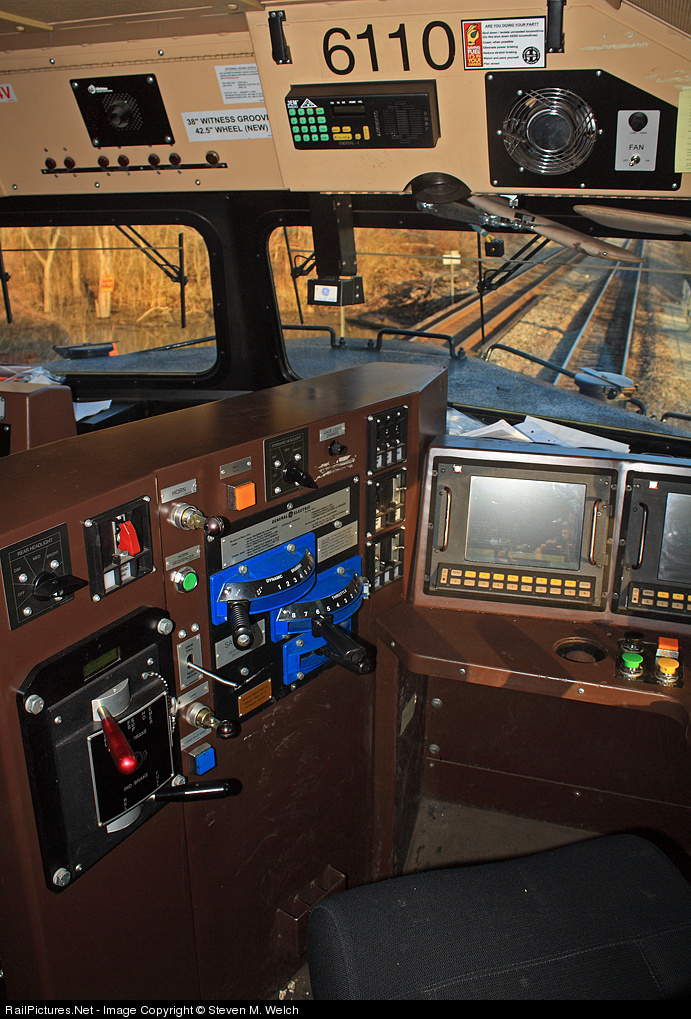Hello

1.)
In older engines the prime mover drives the air compresser directly via a shaft drive, right ?
Are the air compressors electrical driven in the newer engines like the GEVO ?
(A electrical driven compressor works independent from the rpm of the prime mover, if the generator produce enough electric energy with a idling prime mover ...)
How many horsepower has a electrical driven compresser commonly?!?
2.)
When engines operates in multiple, does every engine feed directly the main brake pipe
or does only the lead engine feed the brake pipe (with its own compresser and the main reservoir pipe, which itself is charged by the other engines...)
3.)
Is there a difference in "air (brake) is set" [sic] and "brake is release".
Are these two different positions of the brake value handle ?
Or describe these terms both the same brake state ?
Bye

Chargin' the Air! The reverser is centered, air is set, and the throttle is in Run 6, as two GEVO's howl trying to pump the 140 car empty coal train back up after switching. Photo taken with permission. Note, before you start having kittens about fuel conservation and that the compressor does the charging without needing to notch out, I was not the engineer of this train.This picture and its description leads me to 3 Questions:
1.)
In older engines the prime mover drives the air compresser directly via a shaft drive, right ?
Are the air compressors electrical driven in the newer engines like the GEVO ?
(A electrical driven compressor works independent from the rpm of the prime mover, if the generator produce enough electric energy with a idling prime mover ...)
How many horsepower has a electrical driven compresser commonly?!?
2.)
When engines operates in multiple, does every engine feed directly the main brake pipe
or does only the lead engine feed the brake pipe (with its own compresser and the main reservoir pipe, which itself is charged by the other engines...)
3.)
Is there a difference in "air (brake) is set" [sic] and "brake is release".
Are these two different positions of the brake value handle ?
Or describe these terms both the same brake state ?
Bye